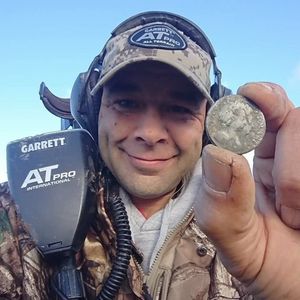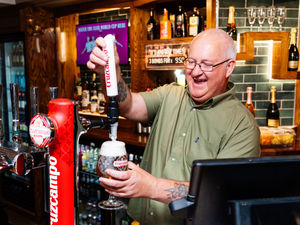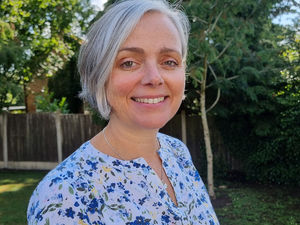800-year-old coins dug up by detectorists near Oswestry
Medieval coins dating back 800 years have been unearthed in north Shropshire.
The seven short cross silver coins were dug up by a group of international metal detectorists on land near Oswestry in the county's second medieval find of the year.
Local detecting enthusiast Chris Langston, who runs the company Metal Detecting Holidays, found the coins with detectorists from the USA and Australia last week.
The coins are thought to date back to between 1180 and 1247, but Mr Langston is yet to reveal where exactly the haul was detected.
The new find means 14 short cross coins have been found in Shropshire in recent months, after seven of the coins were found by separate group in September.
The hoard is now being dealt with by the Shropshire Finds Liaison Officer Peter Reavill.
Mr Langston said: "Finding a hoard is a metal detectorists dream find and everyone involved in the discovery are very happy to have saved 800 years of history.
"It is exciting for everyone involved and the finds liaison officer is delighted at the moment, because we are finding artefacts that are piecing bits of history together than haven't been found before."

The hoard was found by Mr Langston and guests Carlotta Brandenburg, Jocelyn Elizabeth, Beau Ouimette, Tim Saylor, Brandon Ray Neice, Ken Cunliffe.
Short cross coins were introduced in 1180, and had the moneyer's name and mint on it.
A moneyer was a private individual who would have been permitted to mint money, and were trusted to create currency on behalf of kings and rulers.
At that time, the coins were minted at a number of places around the UK, including Carlisle, Exeter, Lincoln, London, Northampton, Norwich, Oxford, Wilton, Winchester, Worcester, and York.
The latest find comes after Mr Langston found silver hammered six pence pieces while metal detecting at 'Hammered Hill' back in January.
He has named the area 'Hammer Hill', because the coins were produced by placing a piece of metal between two dies and hammering it to an image on both sides.
Mr Langston believes the latest coin find could have been someone's savings in the 12th century that were scattered when the field was been ploughed.
Last week he also discovered a Palstave Bronze Age axe near Maesbury, and believes there are plenty more historical artefacts hidden beneath the Oswestry area.
Once the coins have been logged with the finds officer, they will be distributed to the finder.
Mr Langston is expecting another group of guests in the coming months, and will be going back to check if more of the hoard is out there.
He said: "It now has to be disclaimed, and I don't think anyone will be coming forward to claim them, before they are sent back out to the finder.
"We believe there are more things out there to be found, and we will be going out very soon to try find them."





